
Spain has a rich history and culture present both on the Iberian peninsula as well as nearby coastal Africa. This article explores funeral and death practices in different regions as well as different eras. Although Catholicism is historically the prevalent religion of the Spanish Kingdom, various customs and beliefs are still present. Have you ever heard of Canarian mummies, for example? This article also explores seven different Spanish regions and their local and historical death and funeral customs.

The Kingdom of Spain (“Reino de España”) consists of 17 political regions, called autonomous communities. Moreover, the constitution provides limited rights of self-governance and autonomy to these communities. As a result, most of them have also developed their own distinctive culture. We are next visiting seven of these autonomous communities and discussing their unique death traditions.
First off, we visit the Extremadura region and its prehistoric cave burials. Collective burials sites were nothing uncommon in Prehistoric Western and Central European regions. Additionally, archeologists believe that collective cave burials in Prehistoric Extremadura were actually more common than originally thought.
However, early explorers carelessly stole goods and remains from such burial sites. Moreover, certain geological formations made the soil and rocks around these Prehistoric bodies unsuitable for preservation. As a result, many of the caves functioning as a burial site have been lost in time.
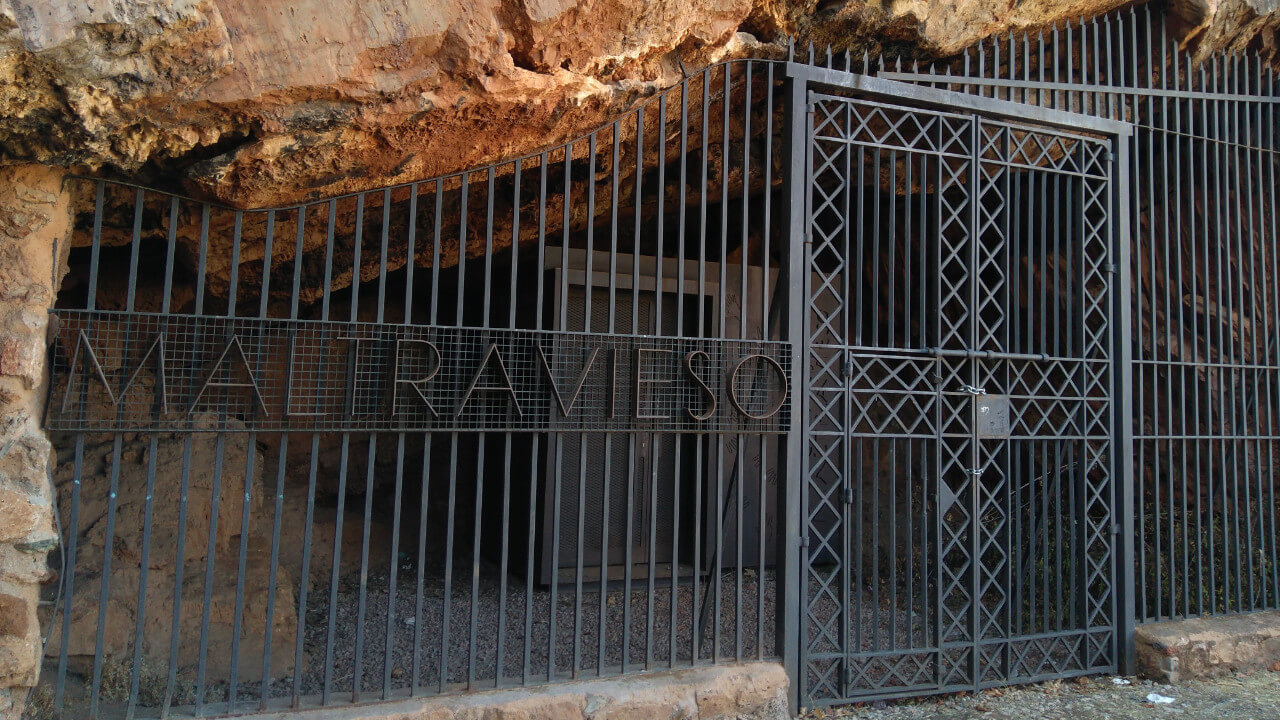
In addition to all of that, it seems that Extremadura cave burials were taking place for many centuries. They specifically occurred for thousands of years from the Mesolithic Age until the Bronze Age.
Moreover, Extremadura local populations of that time did not only use natural cave formations as collective burial sites. It seems that they also have other megalithic formations as burial sites. Finally, researchers keep excavating archeological sites even in recent decades, such as the Canaleja 2 and Cueva de Postes. And after all, who knows how many hidden burial sites remain in Extremadura?
The region of Canary Islands is a Spanish archipelago off the coast of Morocco. Due to its proximity to the Western coast of Africa, its history and culture is linked to populations originally coming from this area. For instance, before the 15th century Spanish conquest of the islands, the indigenous people living there were the Berber Guanche.
Mostly residing in Tenerife, they had formed their own unique culture and burial customs. Furthermore, the most fascinating, perhaps, example of Guanche burials are the mummies found on the island. Apparently, Guanche also used embalming techniques comparable to the Ancient Egyptians. And that’s the origin of Canarian mummies.

Although the mummified corpses have been found on other Canary islands, their purpose is up for debate. For instance, many researchers support that corpses on La Palma or on Gran Canaria were mummified due to environmental reasons. Moreover, mummification did not take place for sure on islands such as Lanzarote and Fuerteventura.
As a result, that makes the Tenerife mummies unique amongst other Guanche practices in the archipelago. After all, not only did the Guanche mummify their dead, but they also built a necropolis to store the mummies. For example, the Necropolis of Uchova contained around 70 mummies. In modern Canarian Spanish, the mummies are often called mirlados meaning the embalmed ones or even enzurronados which translates to the leather-bagged ones.
According to medieval explorers, the Guanche only mummified people of a higher social status. People of lower position were, instead, buried in simple sand graves. Additionally, reports from that age indicate that the Guanche had mortuary specialists of sorts – people working on the mummification process. The gender of the specialist depended on the gender of the person getting mummified. Finally, the rest of their community saw these specialists as unclean, due to the nature of their tasks.
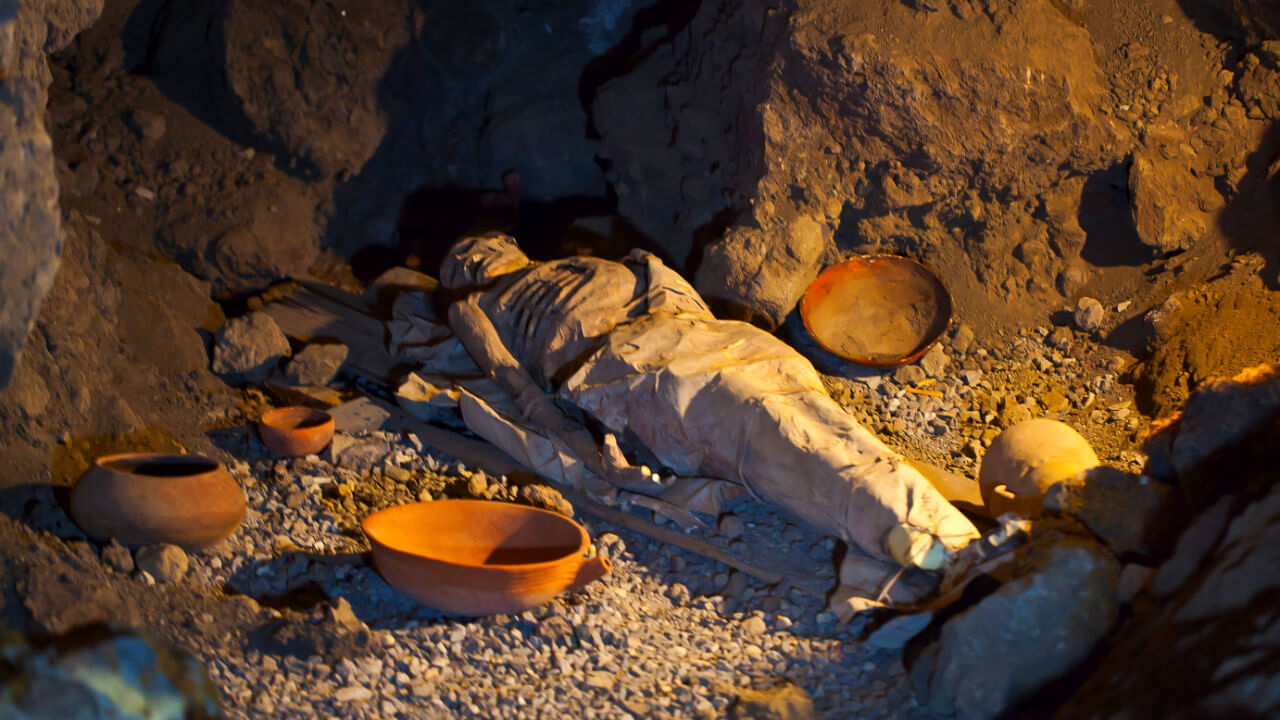
The Visigoths – alongside the Ostrogoths – were a major force during the Late Antiquity period of the Roman Empire. Their domain reached the Iberian peninsula, in modern day Spain. As a result, Visigothic cemeteries have been found all across Spain, and especially in the region of Castile and Léon. Or have they?
According to contemporary experts, Spanish researchers of the 19th and 20th century used certain archeological findings to promote Spanish nationalism. Moreover, especially during the 1930s Spanish researchers used, almost intact, the German framework of analysing ancient burial findings. Thus, the German framework used to analyze cemeteries of the Goths, was also used by the Spanish to identify Visigoths in Spain. As a result, many ancient cemeteries were labeled as Visigothic cemeteries like the ones at the Duero basin.
Although the presence of Visigoths in the Iberian region is indisputable, not every necropolis was Visigothic. Spanish Nationalism during the 1930s used, thus, biased ideas about the ethnicity of the deceased buried there.

The most particular, perhaps, of all the autonomous regions of the Spanish region is no other than the Basque country. Having their own unique language and culture, Basques are also following death traditions very different from the rest of Spain. For instance, unlike many Spanish regions, death is central in the way Basques see the world. That also includes the notion of good death.
In other words, many Basques believe that there is no such thing as a good life, without a good death. Respectively, bad death also exists in Basque beliefs and it is related to a difficult painful end of life. Moreover, a bad death often is a result of magic and specifically the evil eye.
In pre-Christian Basque country, witches would use amulets and herbs to protect people from the evil eye and a bad death. In addition to the above, death omens were also present in Basque culture. For example if a rooster is crowing or a dog is barking in the night, then death is coming. Additionally, if it rains at the moment of someone’s death, they are going to heaven. If there is a storm, instead, the soul is headed to hell.

Moreover, according to Basque traditions the dead may appear in the night and demand or ask things of the living. Basque traditions also dictate that the mourning family needs to cover the mirrors and leave a window open so the soul may move on. Moreover, in certain Basque communities the relatives burn the bed of the deceased by the road leading to the cemetery. Most people would also avoid building their house on this death road.
The deceased remained members of the household, too. Basques have had the tendency to consider their dead relatives as actively being part of their family. That also meant that many families buried their dead under the floorboards of the house or in their estate.
Finally, women were often very important figures of Basque household. The matriarchal values of the Basque society are also present in funerals. Women are in charge of preparing and washing the body, welcome funeral guests and organize all the necessary rites. For example, they need to pray for the dead, attend mass but not many other public events.

Burials in the Castila-La Mancha region were distinctive for their religious diversity during Medieval times. Christian, Muslim and Jewish populations buried their dead but differences were bound to exist.
For instance, the body’s position in the coffin differed in all three burial styles. Muslims placed the body facing Mecca – originally Jerusalem. Christian bodies were orientated towards the sky – which also resulted in anthropomorphic graves. As a result, the body would remain facing the sky also in later stages of decomposition.
Finally, Jewish burials were a bit more complicated since the rules did not stop at the orientation of the body. Instead, the correct burial plot needed to be found as well as the depth of the grave. Archeologists working on Toledo burial sites have supported that these differences are helping them identify the otherwise similar medieval graves.
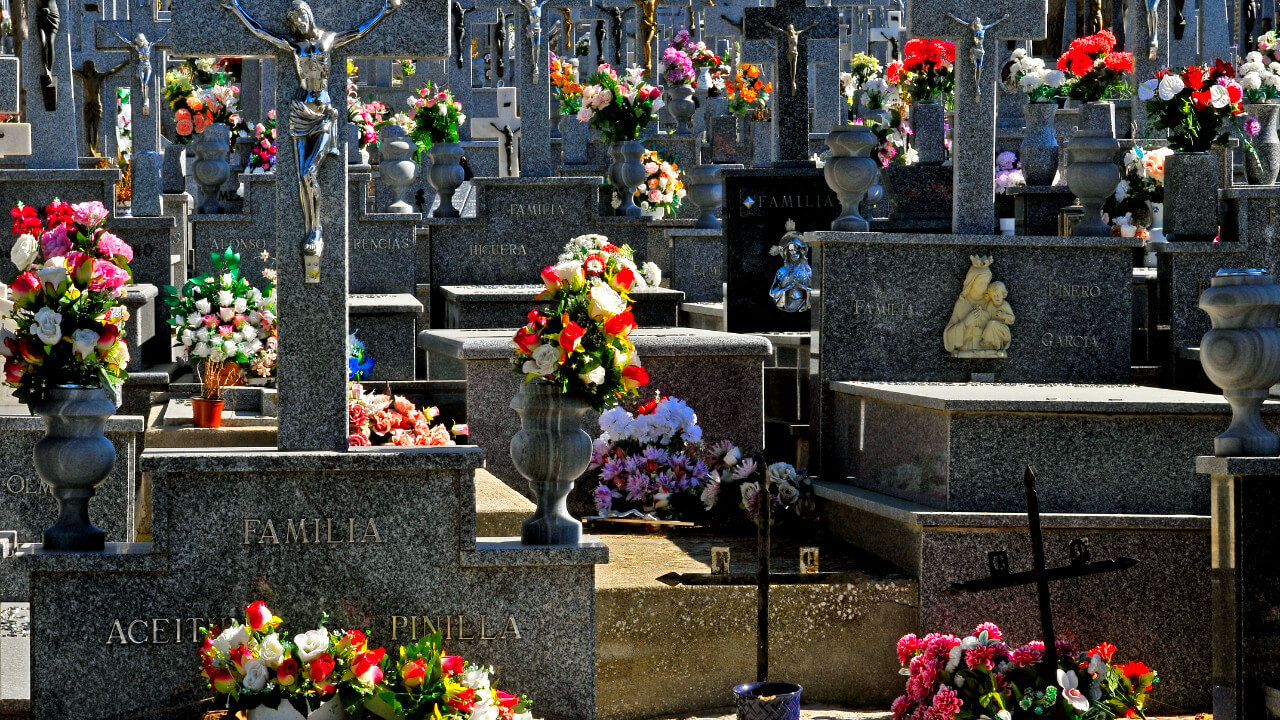
After all, most medieval burials – regardless of religion – included a wooden coffin or a plain shroud. Funerary architecture included the use of lucilo which was a dome made of bricks that sealed the tomb.
Catalonia is home to a particular death custom. It is not uncommon for the relatives to spend time with the corpse during a wake. Catalans, though over a different sort of viewing. Specifically, they deposit the body of the deceased in a glass casket. This use of glass seems almost like a shop window but it is not the only option. The so-called Catalan-style is when the glass case with the body is actually placed in the middle of the room. Finally, this custom is often considered a sign of respect to the dead.

According to Muslim traditions, the dead need to be returned to the earth. As a result, Muslim funerals often do not make use of a coffin. However, in most Spanish regions coffin-less burials are not allowed. Muslims there had to adapt their custom by drilling holes into the coffin.
As a result, earth would still fall through and end up touching the body. The only region that allows coffin-less burials is Andalusia, home to Spain’s most Muslims. For instance out of the 22 cemeteries that have a Muslim section in Spain, 8 are in Andalusia. There have been raising complains from the Muslim population for not having easier access to appropriate Muslim burial rites.
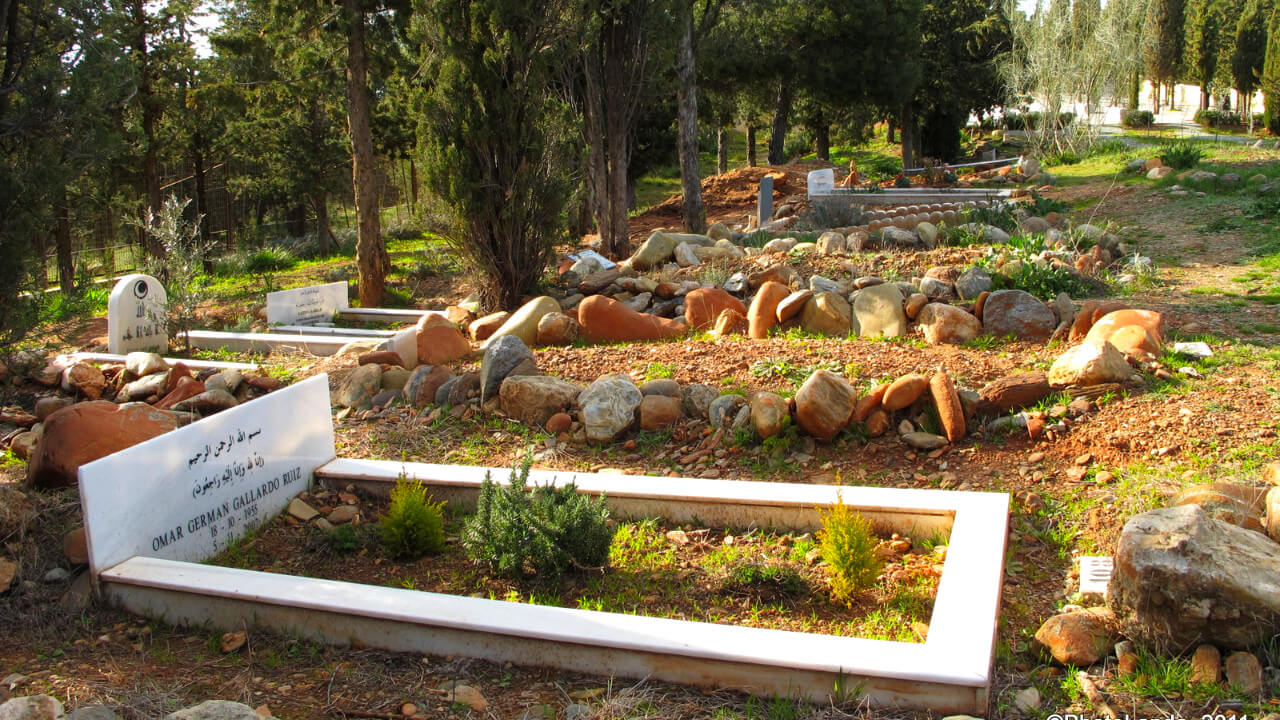
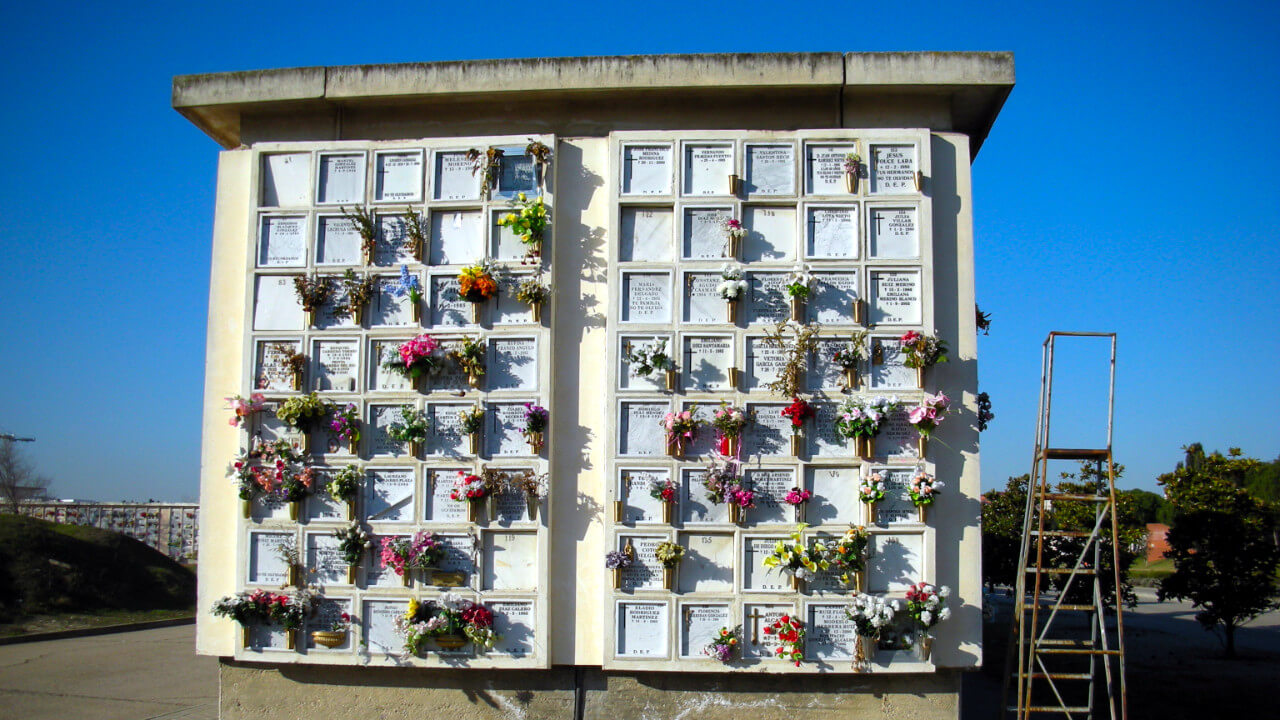
It is important to inform the authorities upon someone’s death. Once the death is confirmed, the family can already start preparing the funeral. Moreover, autopsies are not common, as they do not take place unless there are doubts about the cause of death.
Thereafter, family members get in touch with the tanatorio, the funeral house that then takes care of the process. Despite the mañana culture of Spain, it is worth pointing out that most funerals take place as soon as possible after death. Cultural anthropologists have supported that this may signify the modern Spanish views on death and the dead.
Niches and columbaria are very popular, especially in crowded areas. However the tradition of using columbaria at cemeteries is not new, and as a result, old abandoned columbaria can be found all across Spain. Cremation is becoming popular too. However, disposing of the ashes can be a bit more complicated. For instance scattering the ashes by the sea or in forest areas, away from people is allowed. Parks or monuments could also be an option but a special permit is required.
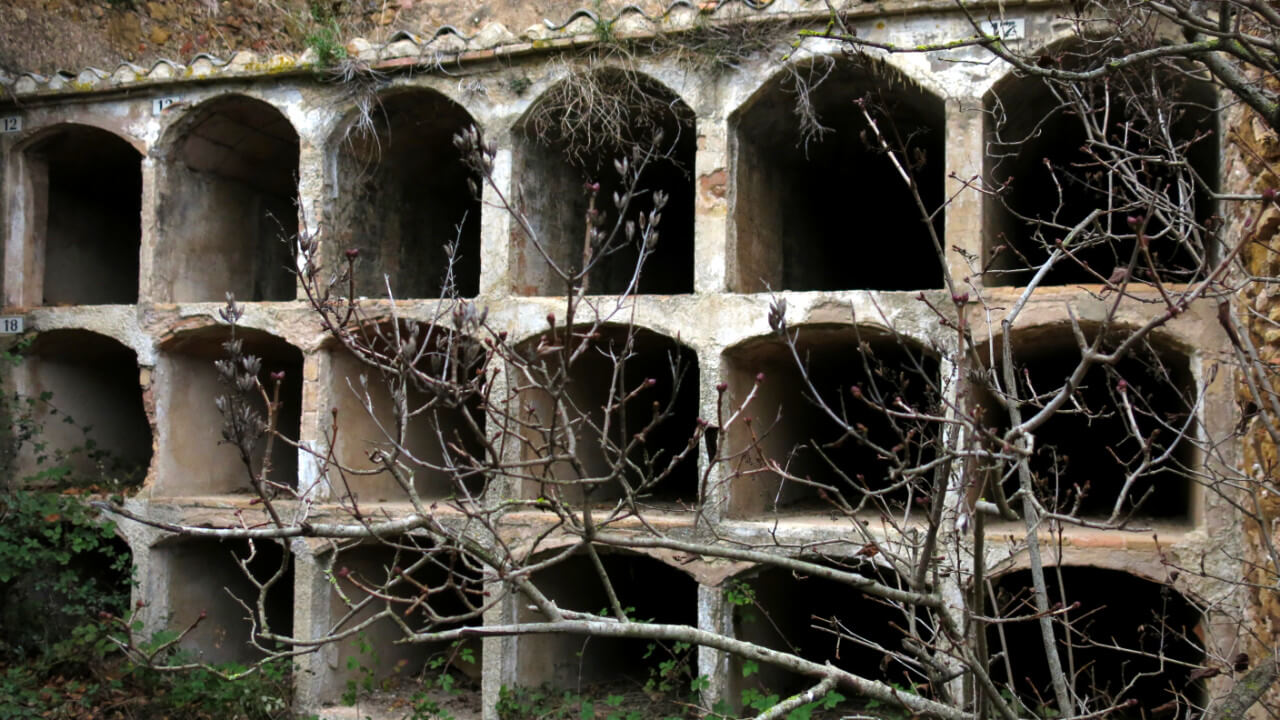
The average mixed death rate of Spain is 8,8 per 1.000 people (2019).
In most cases, Spanish funerals take place within 24 hours upon a person’s death. If relatives need to travel from distant regions or abroad, the funeral may take place a bit later, instead.
58.6% of the Spanish population is Catholics – making Catholicism the major religion of the Kingdom. However, 40% of them do not actually practice it. In addition to that, 37% of Spaniards identify as atheists while only 2,4% practice other faiths. These primarily include Islam, Protestantism and Buddhism.
According to the Spanish ONT, the National Transplantation Organization (“Organizacion Nacional de Trasplantes”), the rate of utilized organs in 2018 was 48 per million population. That also corresponds to 2241 transplants in that year. Additionally, this makes Spain the country with the highest organ donation rate in the world.